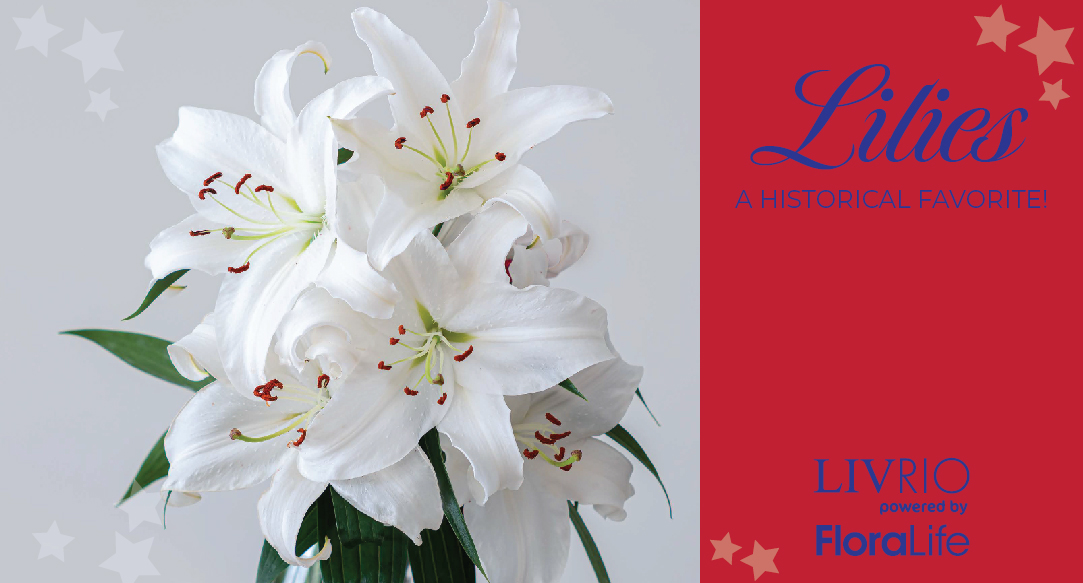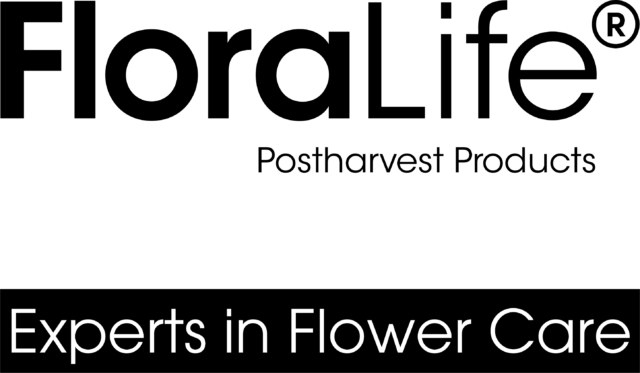Lilies: A Historical Favorite!
LivRio Magazine June 2023, powered by FloraLife

Lilies are native to the northern hemisphere in areas with temperate climates down to the subtropics. Because of this natural distribution, they have a long history with humans dating back four thousand years when the Madonna lily, Lillium candidum, was grown in Asia for medicinal purposes. Other species of lilies have also been cultivated for culinary, and ornamental uses.
Given the long relationship between lilies and humans, it’s no surprise that lily flowers feature heavily in literature, myth, legends and religious celebrations. According to Greek mythology, the lily flower came into being from a drop of Hera’s breast milk, and to this day white lilies are seen as a symbol of purity in many cultures. Such is the beauty of lilies that Shakespeare wrote ‘To gild refined gold, to paint the lily’, often mis-quoted as ‘To gild the Lily’, to refer to a process of embellishing something already perfect, or beautiful.
Although we have loved lilies for millennia, don’t be fooled into thinking that lilies are staid or passé, as current cultivated varieties range from classically beautiful to dramatic and vibrant.
Cultivated Lilies can be classified into four different types; Longiflorum, AKA Easter Lilies, Asiatics, Orientals, and LA lilies which are hybrids made by crossing the Longiflorum and Asiatic lilies.
So, if it’s a classic pink oriental you’re looking for ‘Starfighter’ will fit the bill perfectly, or maybe try something new like Rose Lily ‘Natalia’ or ‘Carolina’.
Whichever lily you choose, please remember to remove the pollen producing anthers after the flowers open if your lilies will be displayed in a home around pets. This step also reduces the risk of pollen transferring to clothes or soft furnishings.
Care and Handling Tips
Purchasing
- For Oriental, Asiatic, LO or LA, choose stems with lower blooms showing full color, and on the verge of opening.
- For Longiflorum all buds should be fully formed, but still closed.
Shipping and Storage
- Shipping and storage temperatures should be 34 – 38° F (1-3C).
- Dry shipping is recommended.
Re-hydration at Store Level and Storage
- Start processing with a clean bucket, sanitized with FloraLife® D.C.D.® cleaner.
- If received dry packed, conditioning of stem ends is recommended to prevent blockage and promote uptake. Cut approximately 1” or more off stems. Use clean, sanitized clippers or knife, and treat with FloraLife® Quick Dip.
- Place flowers in a holding treatment such as FloraLife® Clear 200 or FloraLife® Express 200. Do not put flowers directly in metal/galvanized buckets. Use clean, high-quality water that has not been treated with a water softener as the salt levels can be damaging to flowers.
- Store in a cooler at 34 – 38° F with a relative humidity of 75-85%
- Allow minimum 2 hours to hydrate placing buckets in an area with good airflow.
- Always remember FIFO (first in/first out) when rotating flowers.
Vase Care
- Remove any leaves that might be below the vase solution.
- Cut approximately 1” or more off stems. Use clean, sanitized clippers or knife. If received dry, treat with FloraLife® Quick Dip.
- Immediately place flowers in vase solution containing either FloraLife Crystal Clear® (the perfect choice for clear vases) or FloraLife® Express 300 (the no-cut needed solution).
- Keep away from direct sunlight and ripening produce.
Common Defects
To prevent bud drop or drying, insist that your supplier/grower treats with an ethylene action inhibitor treatment such as EthylBloc™. For premature leaf yellowing, use an anti-yellowing treatment at farm level after harvest, such as FloraLife® Bulb 100 in Colombia, and use bulb crop flower food. Pollen sheds stain whatever they touch. Remove them when the flower opens.
For more information, click here:
- https://floralife.com/article/oriental-lily-troubleshooting/
- https://floralife.com/flowers/oriental-lily/
- https://floralife.com/article/troubleshooting-la-hybrid-lily/
- https://floralife.com/flowers/la-hybrid-lily/
*Product availability depends upon geographical region.
Check https://floralife.com/products/#product_grid for more information.
